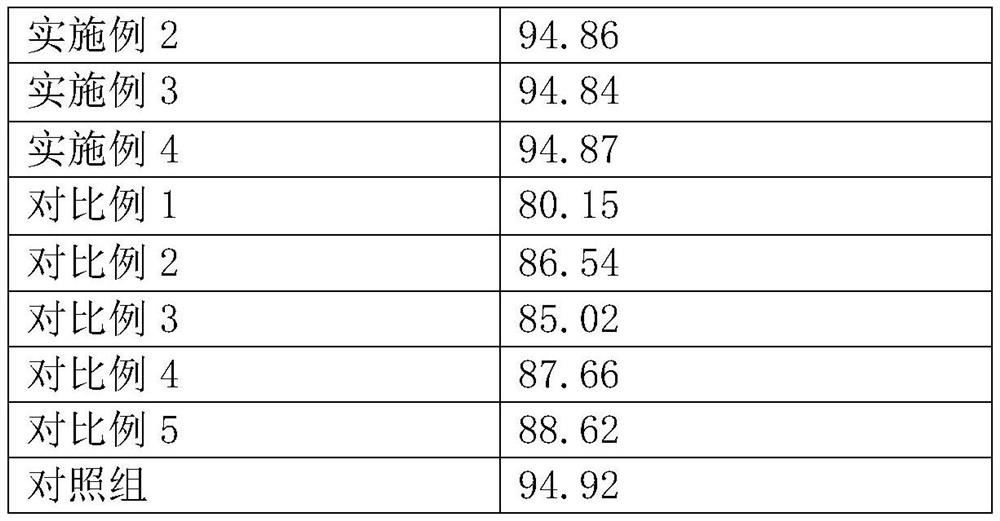Method for low-temperature preservation of Telenomus remus Nixon
A technology for cryopreservation and noctuid moth, which is applied in the field of insect breeding, and can solve the problems of lack of low-temperature storage of noctuid moth and black egg bee, etc.
- Summary
- Abstract
- Description
- Claims
- Application Information
AI Technical Summary
Problems solved by technology
Method used
Image
Examples
Embodiment 1
[0026] Embodiment 1 A kind of method for cryopreservation of Noctuid spp.
[0027] (1) Fresh eggs of Spodoptera litura were parasitized by the female wasps of Spodoptera litura for 24 hours at the ratio of eggs of 1:50, and then the eggs that had been parasitized by Spodoptera litura were placed at 25°C, RH 75%, light Cultured under the condition of cycle 14L:10D to 1 day old;
[0028] (2) Place 1-day-old parasitic eggs at 15°C for 1 day, and then place them at 13°C for 1 day for low-temperature acclimatization;
[0029] (3) After the low-temperature acclimation is completed, lower the ambient temperature to 5°C at a cooling rate of 3°C / h, refrigerate the parasitic eggs for 6 days, and then place the parasitic eggs at 26°C, RH 75%, and photoperiod 14L:10D to continue Cultivate until the moth black egg bee emerges.
Embodiment 2
[0031] (1) The fresh eggs of Spodoptera litura were parasitized by the female wasp of Spodoptera litura for 24 hours at the ratio of wasp eggs of 1:50, and then the eggs that had been parasitized by Spodoptera litura were placed at 26°C, RH 70%, light Under the condition of cycle 15L:9D, culture to 6 days old;
[0032] (2) Place 6-day-old parasitic eggs at 16°C for 0.5 days, and then place them at 12°C for another 0.6 days for low-temperature acclimatization;
[0033] (3) After the low-temperature acclimation is completed, reduce the ambient temperature to 8°C at a cooling rate of 4°C / h, refrigerate the parasitic eggs for 9 days, and then place the parasitic eggs at 27°C, RH 65%, and photoperiod 15L:9D to continue Cultivate until the moth black egg bee emerges.
Embodiment 3
[0035] (1) Fresh eggs of Spodoptera litura were parasitized by the female wasp of Spodoptera litura for 24 hours at the ratio of wasp eggs of 1:50, and then the eggs that had been parasitized by Spodoptera litura were placed at 27°C, RH 65%, light Cultured to 9 days old under the condition of cycle 14L:9D;
[0036] (2) Place 9-day-old parasitic eggs at 16°C for 0.7 days, and then place them at 12°C for 0.8 days for low-temperature acclimation;
[0037] (3) After the low-temperature acclimation is completed, lower the ambient temperature to 10°C at a cooling rate of 3°C / h, refrigerate the parasitic eggs for 3 days, and then place the parasitic eggs at 25°C, RH 70%, and photoperiod 14L:10D to continue Cultivate until the moth black egg bee emerges.
PUM
 Login to View More
Login to View More Abstract
Description
Claims
Application Information
 Login to View More
Login to View More - Generate Ideas
- Intellectual Property
- Life Sciences
- Materials
- Tech Scout
- Unparalleled Data Quality
- Higher Quality Content
- 60% Fewer Hallucinations
Browse by: Latest US Patents, China's latest patents, Technical Efficacy Thesaurus, Application Domain, Technology Topic, Popular Technical Reports.
© 2025 PatSnap. All rights reserved.Legal|Privacy policy|Modern Slavery Act Transparency Statement|Sitemap|About US| Contact US: help@patsnap.com


